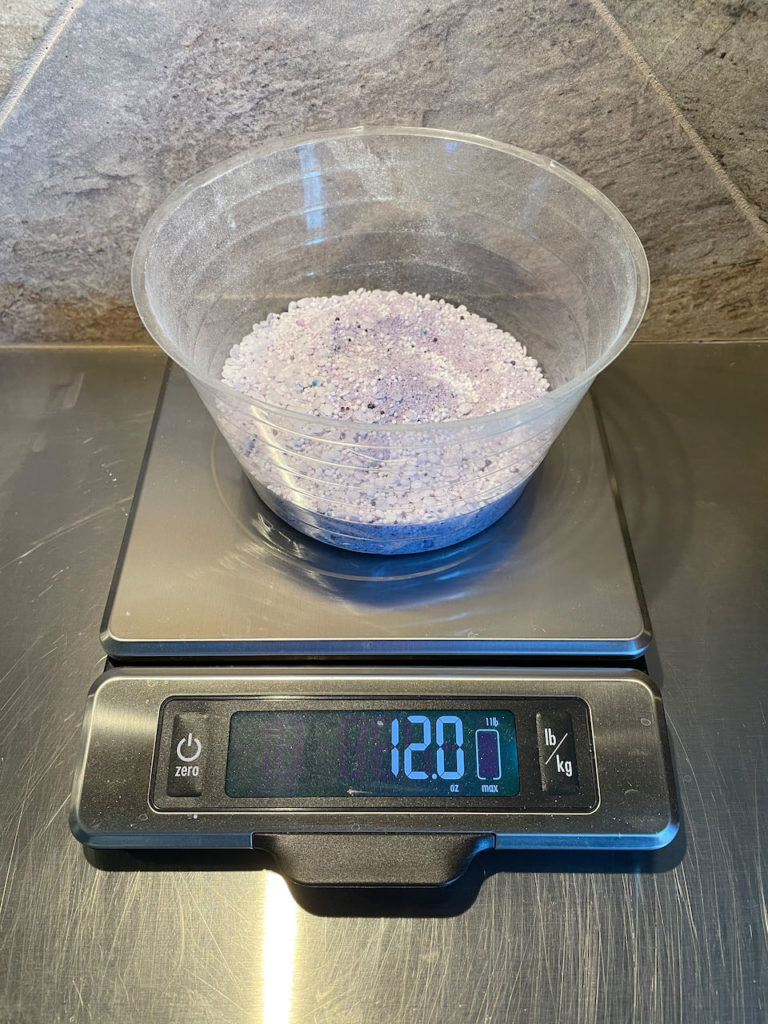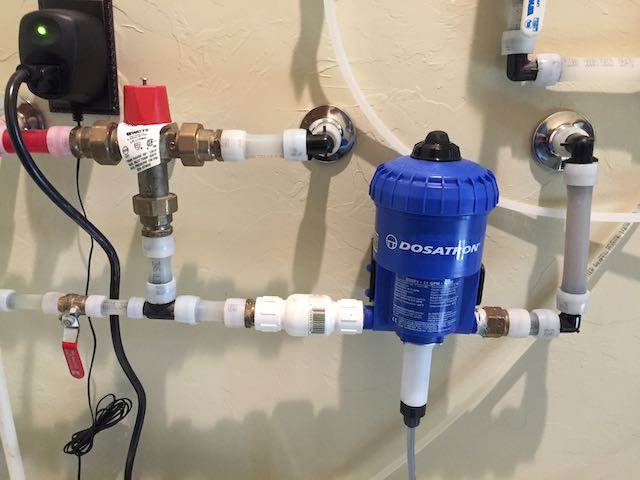There are probably as many opinions on fertilizing orchids as there are days in a year! “How often should I fertilize?” and “How much fertilizer should I use?” are the two most often asked questions by orchid growers.
You may have heard the adage, “fertilize weakly, weekly,” but what does that mean? The recommendation is based on how commercial growers fertilize plants, not just orchids, during their production. Many commercial growers utilize the technique known as “constant liquid feed” or CLF. It is fertilizing a crop at every watering with a low-dose of fertilizer, which is referenced in ppm N delivered, i.e. parts nitrogen per million parts water and other dissolved minerals being delivered out the hose to the plants. Obviously, plants need more nutrients than just nitrogen, but this terminology provides a way for growers to communicate how much fertilizer is being applied to their plants. The total nitrogen in a fertilizer will be comprised of ammoniacal nitrogen, nitrate nitrogen, and/or urea. When selecting a fertilizer for orchids, avoid ones with urea in the formulation.
There are 18 known essential elements for healthy plant growth and development. Six are macronutrients, i.e. those needed in the greatest amounts, and three of these macronutrients — carbon (C), hydrogen (H), and oxygen (O) — are supplied by water and air. Carbon is supplied as carbon dioxide from the air, and hydrogen and oxygen are supplied as water. The other three macronutrients — nitrogen (N), phosphorus (P), and potassium (K) — are the three main ingredients in fertilizers, listed as the three numbers (N-P-K) on the front of the bag, bottle, or box of fertilizer. The next three elements needed in the greatest amounts are the secondary macronutrients — calcium (Ca), magnesium (Mg), and sulfur (S). The remaining nine elements — boron (B), chlorine (Cl), cobalt (Co), copper (Cu), iron (Fe), manganese (Mn), molybdenum (Mo), nickel (Ni), and zinc (Zn) — are micronutrients, i.e. those needed in the least amounts for healthy plant growth and development. Current research is studying additional elements, e.g. silicon (Si) and selenium (Se), that may be important to healthy plant growth and development.
Plants, including orchids, go through various growth phases throughout a year as temperatures change and light intensity and duration change. With the exception of dormancy, they are growing and developing, which means they will benefit from being fertilized. However, fertilizer rates should be varied throughout the year to align with the seasonality of orchids’ growth and development: higher rates during their active summer growth and lower rates during their reduced winter growth. I use a Dosatron D25F1 1:100 fixed ratio injector to deliver JR Peters 12-3-15 (7 Ca, 2 Mg) Orchid RO Water fertilizer or 10-30-20 Jack’s Professional Blossom Booster fertilizer as CLF at the following rates. An electronic scale enables me to weigh the specified amount of fertilizer needed to prepare the desired volume of fertilizer concentrate for the injector. Since I use reverse osmosis water, I use the RO formula of fertilizer; however, JR Peters also makes an orchid formula for well or municipal water.
| Months | Rate (ppm N) | *Approximate teaspoons/gallon |
| Dec–Feb | 75 | 1/2 |
| Mar–May | 100 | 5/8 |
| Jun–Aug | 125 | 7/8 |
| Sep–Nov | 100 | 5/8 |


As with any fertilizer program, it is important to leach excess fertilizer salts from your orchids’ potting medium periodically. I do this during the last week of each month. Thus, I inject fertilizer at the above CLF rates for weeks 1–3 of each month, and, then, water with clear RO water during the last week of the month. The use of clear water during the last week also enables me to give any orchids with special cultural requirements, e.g. drier winter months (DM), a watering without fertilizer once per month.
